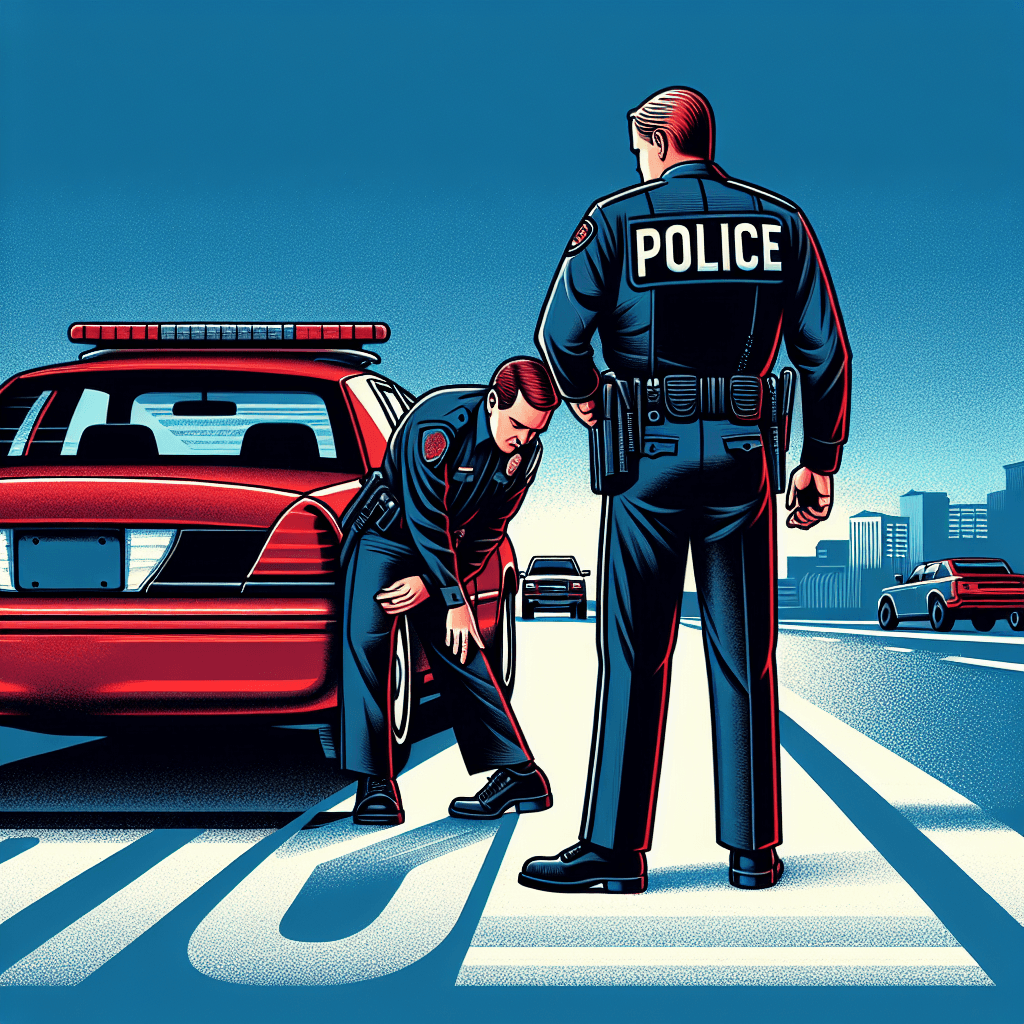Why do police officers touch the back of a car during a traffic stop
It’s not a random habit; that simple touch is a calculated, old-school tactic designed to leave a crucial and potentially life-saving piece of evidence behind.


Too Long; Didn't Read
TLDR: Police touch the back of a car to leave their fingerprints, which serves as evidence linking them to the vehicle for their own safety. It also confirms the trunk is closed.
Decoding the Tap: Why Do Police Officers Touch the Back of a Car During a Traffic Stop?
You see the flashing blue and red lights in your rearview mirror. Your heart beats a little faster as you pull over to the side of the road. The officer exits their vehicle and begins to approach. Just before they reach your window, you notice them lightly touch the trunk or taillight of your car. It’s a small, quick gesture, one you might easily miss. But it’s not random. This seemingly minor action is a deliberate and long-standing police procedure with critical safety implications. This post will delve into the key reasons behind this practice, explaining the tactical thinking that turns a simple touch into a vital tool for officer safety and evidence.
The Primary Reason: Leaving a Trace
The most crucial and historically significant reason for an officer touching a car is to leave evidence. Specifically, their fingerprints.
This practice became a standard training procedure long before the widespread adoption of dashboard and body-worn cameras. In a worst-case scenario where a traffic stop turned violent—if the officer was harmed or abducted, or if the driver fled the scene—the officer's fingerprints on the vehicle would create an undeniable link. Investigators would have physical proof that this specific officer had contact with this exact vehicle, which could be critical for an investigation. While modern technology often makes this tactic redundant, it remains a simple, low-tech backup that has been ingrained in police training for generations.
A Secondary, But Vital, Safety Check
Beyond leaving evidence, the touch serves as a practical, physical safety check. Officers are trained to be aware of every potential threat, and a traffic stop is one of the most unpredictable situations they face. The touch on the rear of the vehicle serves two safety-related purposes:
- Ensuring the Trunk is Latched: By placing a hand on the trunk and applying slight pressure, an officer can confirm that it is securely closed. This is done to prevent a potential ambush. It ensures that no one is hiding in the trunk, waiting to spring out and attack the officer as they approach the driver's side window.
- Creating a Distraction: The slight sound or jolt from the touch can also act as a subtle distraction for the vehicle's occupants. This momentary shift in focus can give the officer a split-second advantage to observe any furtive movements inside the car, such as someone trying to hide a weapon or contraband, as they make their final approach to the window.
Is This Practice Still Relevant Today?
With the near-universal presence of dashcams and body cameras in modern policing, the entire traffic stop is now typically recorded on video and audio. This digital evidence is far more comprehensive than a single fingerprint. As a result, some law enforcement agencies and trainers have begun to phase out the practice, viewing it as an outdated habit.
However, many departments continue to teach it for a simple reason: redundancy. Technology can fail. Cameras can be obscured, batteries can die, and recordings can be corrupted. The physical touch remains a foolproof, cost-free method that serves as a backup to technology and reinforces a mindset of constant vigilance and safety for the officer. It's a testament to the "belt-and-suspenders" approach to safety that is essential in law enforcement.
Conclusion
The next time you witness a police officer touch the back of a car during a traffic stop, you'll understand it’s not an idle gesture. It is a calculated and multi-faceted procedure born from decades of experience. This simple tap is a blend of old-school evidence collection, a practical safety check, and a subtle tactical maneuver all rolled into one. While technology continues to evolve, this long-standing tradition serves as a powerful reminder of the inherent risks of police work and the layers of procedure designed to protect those who serve. Understanding these nuances can help demystify law enforcement interactions and foster a greater appreciation for the tactical awareness required on every call.
More Articles

Why do some military submarines have a rubber-like coating that makes them look lumpy?
That bizarre, lumpy skin isn't a design flaw—it's a high-tech shield that swallows enemy sonar pings whole, turning a billion-dollar war machine into a ghost.

Why does a hagfish produce enough slime to instantly fill a bucket?
A predator attacks, and in less than a second, the water becomes a suffocating, gill-clogging trap—this isn't science fiction, it's the hagfish's bizarre secret to survival.

Why does wasabi burn your sinuses while chili peppers burn your tongue?
It’s a tale of two different chemical attacks: one molecule launches an airborne assault on your sinuses, while the other wages a lingering war on your tongue.